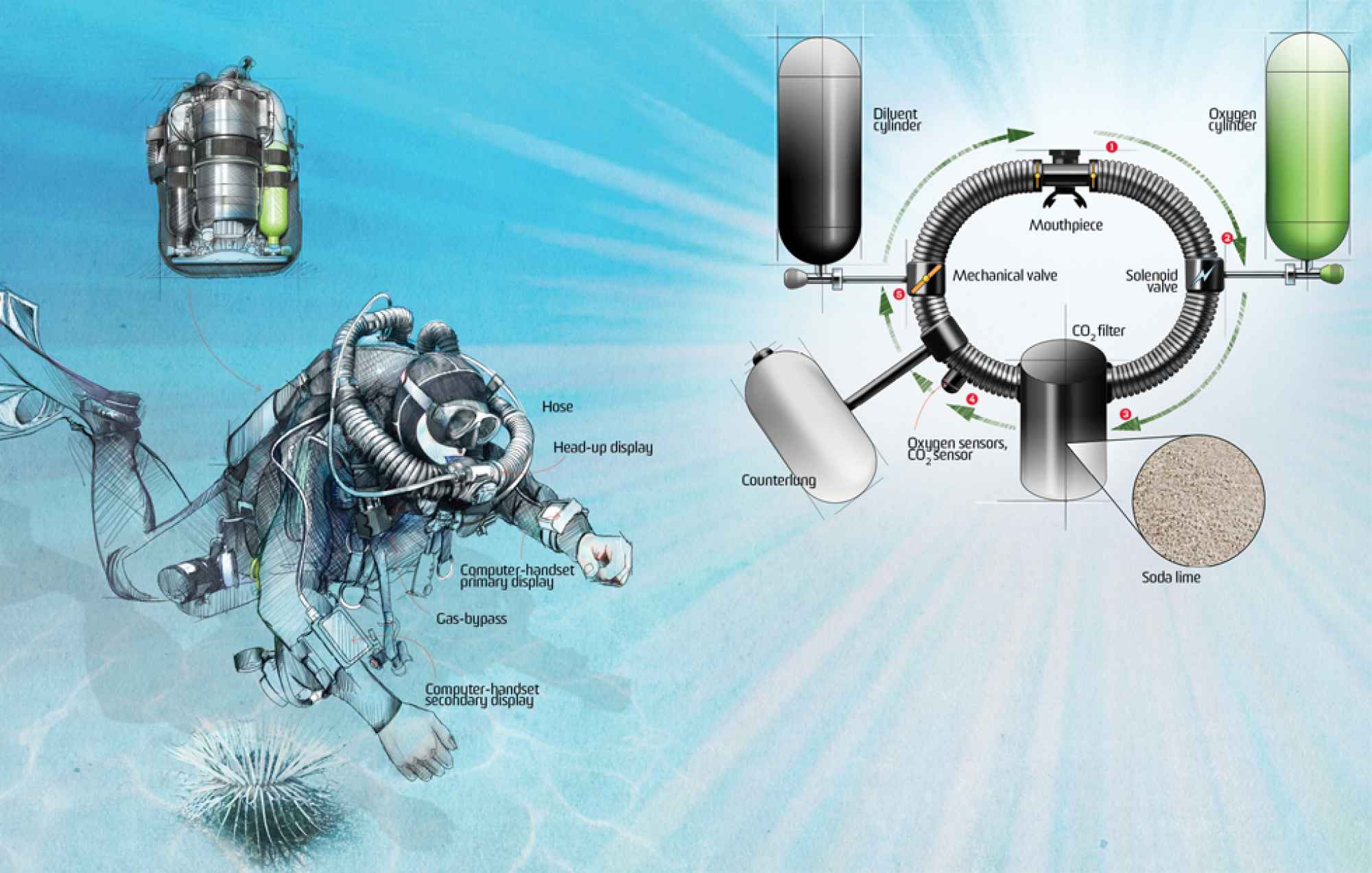Recycled-Air Scuba System

Rebreather System Aids Long, Deep Dives
It’s taken 10+ years from concept to completion for this new recycled scuba air system. The concept of a re-breather is to remove the carbon dioxide from the air we exhale and re-oxygenate it with many steps in between.
The new Explorer system will support a dive to 330 feet for two and three-quarters hours. The system is highly computerized and requires several steps prior to the dive. There are fail safes and a warning system built in and, of course, a bailout scuba tank if all else fails.
Read below for more information.
Conventional scuba systems have some major limitations. Divers using them must carefully monitor the depth and time they stay underwater and endure a series of lengthy decompression steps during resurfacing. Rebreathers recycle air, allowing divers to go deeper and remain underwater for longer, with shorter decompression on ascent. The Navy has used the devices for decades, but they were very expensive, and difficult to maintain and operate. In 2008, VR Technology introduced the Sentinel, a $12,000 rebreather with automated safety systems and full manual backup. Scientists from Woods Hole Oceanographic Institution in Massachusetts and the National Museum of China in Beijing are already using it. This July, Hollis Gear will release the VR-designed Explorer, an even less expensive ($5,400) model made for recreational divers.
THE ESSENTIALS
Human lungs absorb only 5 percent of the oxygen present in air. Rebreathers remove the carbon dioxide from exhaled air and recycle and supplement the leftover oxygen and inert gases, such as nitrogen, back into the diver’s next breath.










